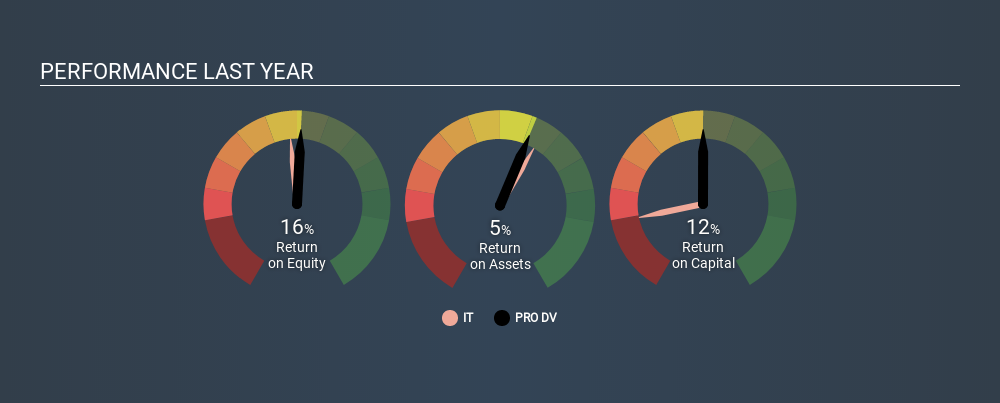
Today we'll evaluate PRO DV AG (ETR:PDA) to determine whether it could have potential as an investment idea. In particular, we'll consider its Return On Capital Employed (ROCE), as that can give us insight into how profitably the company is able to employ capital in its business.
Firstly, we'll go over how we calculate ROCE. Second, we'll look at its ROCE compared to similar companies. Then we'll determine how its current liabilities are affecting its ROCE.
What is Return On Capital Employed (ROCE)?
ROCE is a metric for evaluating how much pre-tax income (in percentage terms) a company earns on the capital invested in its business. Generally speaking a higher ROCE is better. In brief, it is a useful tool, but it is not without drawbacks. Author Edwin Whiting says to be careful when comparing the ROCE of different businesses, since 'No two businesses are exactly alike.
How Do You Calculate Return On Capital Employed?
The formula for calculating the return on capital employed is:
Return on Capital Employed = Earnings Before Interest and Tax (EBIT) ÷ (Total Assets - Current Liabilities)
Or for PRO DV:
0.12 = €79k ÷ (€1.6m - €956k) (Based on the trailing twelve months to March 2019.)
Therefore, PRO DV has an ROCE of 12%.
View our latest analysis for PRO DV
Is PRO DV's ROCE Good?
When making comparisons between similar businesses, investors may find ROCE useful. Using our data, PRO DV's ROCE appears to be around the 10% average of the IT industry. Independently of how PRO DV compares to its industry, its ROCE in absolute terms appears decent, and the company may be worthy of closer investigation.
PRO DV has an ROCE of 12%, but it didn't have an ROCE 3 years ago, since it was unprofitable. That implies the business has been improving. You can see in the image below how PRO DV's ROCE compares to its industry. Click to see more on past growth.

When considering ROCE, bear in mind that it reflects the past and does not necessarily predict the future. Companies in cyclical industries can be difficult to understand using ROCE, as returns typically look high during boom times, and low during busts. ROCE is, after all, simply a snap shot of a single year. Since the future is so important for investors, you should check out our free report on analyst forecasts for PRO DV.
PRO DV's Current Liabilities And Their Impact On Its ROCE
Short term (or current) liabilities, are things like supplier invoices, overdrafts, or tax bills that need to be paid within 12 months. Due to the way ROCE is calculated, a high level of current liabilities makes a company look as though it has less capital employed, and thus can (sometimes unfairly) boost the ROCE. To counteract this, we check if a company has high current liabilities, relative to its total assets.
PRO DV has total liabilities of €956k and total assets of €1.6m. Therefore its current liabilities are equivalent to approximately 59% of its total assets. PRO DV has a relatively high level of current liabilities, boosting its ROCE meaningfully.
What We Can Learn From PRO DV's ROCE
The ROCE would not look as appealing if the company had fewer current liabilities. PRO DV shapes up well under this analysis, but it is far from the only business delivering excellent numbers . You might also want to check this free collection of companies delivering excellent earnings growth.
If you like to buy stocks alongside management, then you might just love this free list of companies. (Hint: insiders have been buying them).
If you spot an error that warrants correction, please contact the editor at editorial-team@simplywallst.com. This article by Simply Wall St is general in nature. It does not constitute a recommendation to buy or sell any stock, and does not take account of your objectives, or your financial situation. Simply Wall St has no position in the stocks mentioned.
We aim to bring you long-term focused research analysis driven by fundamental data. Note that our analysis may not factor in the latest price-sensitive company announcements or qualitative material. Thank you for reading.
About XTRA:PDA0
Flawless balance sheet slight.
Market Insights
Community Narratives



